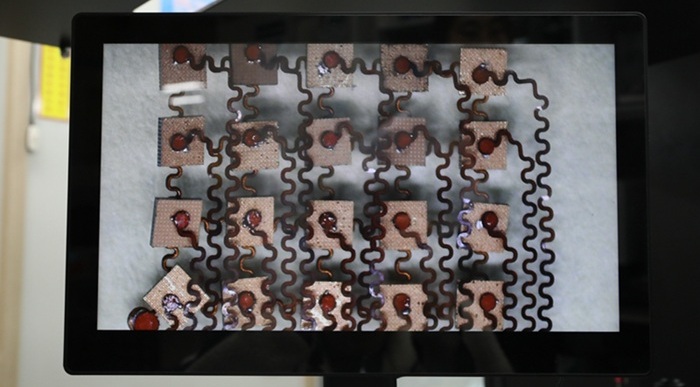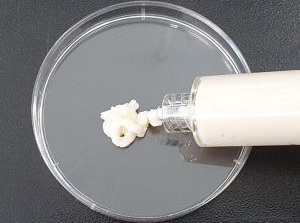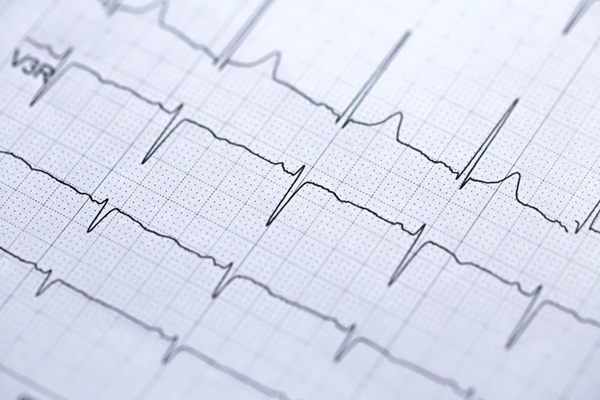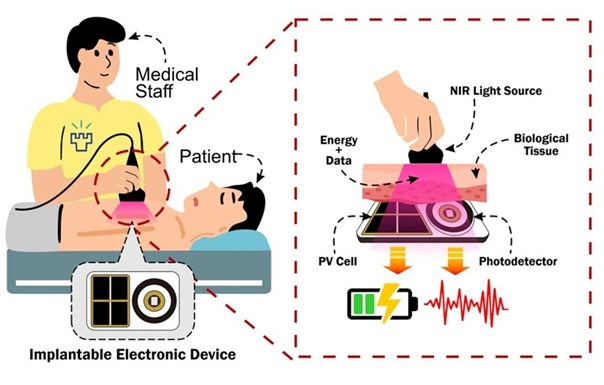Novel Pipeline of AI and Simulation Tools Could Make Process of Screening Drug Candidates for COVID-19 50,000 Times Faster
|
By HospiMedica International staff writers Posted on 15 Feb 2021 |

Image: Novel Pipeline of AI and Simulation Tools Could Make Process of Screening Drug Candidates for COVID-19 50,000 Times Faster (Photo courtesy of Argonne National Laboratory)
A novel pipeline of AI and simulation tools could make the process of screening drug candidates for COVID-19 50,000 times faster.
To find a drug that can stop the SARS-CoV-2 virus, scientists want to screen billions of molecules for the right combination of properties. The process is usually risky and slow, often taking several years. An international team of scientists from 10 organizations, including the US Department of Energy’s (DOE) Argonne National Laboratory (Lemont, IL, USA), have found a way to make the process 50,000 times faster using artificial intelligence (AI). The team has developed a pipeline of AI and simulation techniques, named IMPECCABLE, short for Integrated Modeling PipelinE for COVID Cure by Assessing Better Leads to hasten the discovery of promising drug candidates for COVID-19.
IMPECCABLE integrates multiple techniques for data processing, physics-based modeling and simulation, and machine learning, a form of AI that uses patterns in data to generate predictive models. At the start of the pipeline, computational techniques are used to calculate the basic properties of billions of molecules. This data is used in the next stage of the pipeline to create machine learning models that can predict how likely it is that a given molecule will bind with a known viral protein. Those found to be most promising are then simulated on high-performance computing systems.
Very large experimental data sets are also being gathered from thousands of protein crystals using X-rays at the Advanced Photon Source (APS), a DOE Office of Science User Facility on Argonne’s campus. The technique they’re using to get this data is known as X-ray crystallography. With it, researchers can capture detailed images of viral proteins and their chemical states to improve the accuracy of their machine learning models. The ultimate goals of the pipeline are to understand the function of viral proteins; identify molecules with a high potential to bind with these proteins and, as a result, block SARS-CoV-2 proliferation; and deliver this insight to drug designers and developers for further research and development.
“With the AI we’ve implemented, we’ve been able to screen four billion potential drug candidates in a matter of a day, while existing computational tools might only realistically screen one to 10 million,” said Thomas Brettin, strategic program manager at Argonne.
“Unlike the traditional approach, where you rely on the scientist to think really hard and, based on what they know, come up with ideas for a molecule, with our pipeline you can screen huge numbers of molecules automatically, dramatically increasing your chance of finding a likely candidate,” said Ian Foster, director of Argonne’s Data Science and Learning division.
Related Links:
Argonne National Laboratory
To find a drug that can stop the SARS-CoV-2 virus, scientists want to screen billions of molecules for the right combination of properties. The process is usually risky and slow, often taking several years. An international team of scientists from 10 organizations, including the US Department of Energy’s (DOE) Argonne National Laboratory (Lemont, IL, USA), have found a way to make the process 50,000 times faster using artificial intelligence (AI). The team has developed a pipeline of AI and simulation techniques, named IMPECCABLE, short for Integrated Modeling PipelinE for COVID Cure by Assessing Better Leads to hasten the discovery of promising drug candidates for COVID-19.
IMPECCABLE integrates multiple techniques for data processing, physics-based modeling and simulation, and machine learning, a form of AI that uses patterns in data to generate predictive models. At the start of the pipeline, computational techniques are used to calculate the basic properties of billions of molecules. This data is used in the next stage of the pipeline to create machine learning models that can predict how likely it is that a given molecule will bind with a known viral protein. Those found to be most promising are then simulated on high-performance computing systems.
Very large experimental data sets are also being gathered from thousands of protein crystals using X-rays at the Advanced Photon Source (APS), a DOE Office of Science User Facility on Argonne’s campus. The technique they’re using to get this data is known as X-ray crystallography. With it, researchers can capture detailed images of viral proteins and their chemical states to improve the accuracy of their machine learning models. The ultimate goals of the pipeline are to understand the function of viral proteins; identify molecules with a high potential to bind with these proteins and, as a result, block SARS-CoV-2 proliferation; and deliver this insight to drug designers and developers for further research and development.
“With the AI we’ve implemented, we’ve been able to screen four billion potential drug candidates in a matter of a day, while existing computational tools might only realistically screen one to 10 million,” said Thomas Brettin, strategic program manager at Argonne.
“Unlike the traditional approach, where you rely on the scientist to think really hard and, based on what they know, come up with ideas for a molecule, with our pipeline you can screen huge numbers of molecules automatically, dramatically increasing your chance of finding a likely candidate,” said Ian Foster, director of Argonne’s Data Science and Learning division.
Related Links:
Argonne National Laboratory
Latest COVID-19 News
- Low-Cost System Detects SARS-CoV-2 Virus in Hospital Air Using High-Tech Bubbles
- World's First Inhalable COVID-19 Vaccine Approved in China
- COVID-19 Vaccine Patch Fights SARS-CoV-2 Variants Better than Needles
- Blood Viscosity Testing Can Predict Risk of Death in Hospitalized COVID-19 Patients
- ‘Covid Computer’ Uses AI to Detect COVID-19 from Chest CT Scans
- MRI Lung-Imaging Technique Shows Cause of Long-COVID Symptoms
- Chest CT Scans of COVID-19 Patients Could Help Distinguish Between SARS-CoV-2 Variants
- Specialized MRI Detects Lung Abnormalities in Non-Hospitalized Long COVID Patients
- AI Algorithm Identifies Hospitalized Patients at Highest Risk of Dying From COVID-19
- Sweat Sensor Detects Key Biomarkers That Provide Early Warning of COVID-19 and Flu
- Study Assesses Impact of COVID-19 on Ventilation/Perfusion Scintigraphy
- CT Imaging Study Finds Vaccination Reduces Risk of COVID-19 Associated Pulmonary Embolism
- Third Day in Hospital a ‘Tipping Point’ in Severity of COVID-19 Pneumonia
- Longer Interval Between COVID-19 Vaccines Generates Up to Nine Times as Many Antibodies
- AI Model for Monitoring COVID-19 Predicts Mortality Within First 30 Days of Admission
- AI Predicts COVID Prognosis at Near-Expert Level Based Off CT Scans
Channels
Critical Care
view channel
Ultrasonic Sensor Enables Cuffless and Non-Invasive Blood Pressure Measurement
Accurate blood pressure monitoring is essential for managing cardiovascular disease, yet conventional cuff-based systems are bulky, intermittent, and uncomfortable for long-term use. Optical cuffless methods... Read more
Simple Change in Sepsis Treatment Could Save Thousands of Lives
Sepsis is a life-threatening condition caused by infection and is responsible for nearly one-fifth of deaths worldwide. In sub-Saharan Africa, people living with HIV are particularly vulnerable, with higher... Read moreSurgical Techniques
view channel
Minimally Invasive Coronary Artery Bypass Method Offers Safer Alternative to Open-Heart Surgery
Coronary artery obstruction is a rare but often fatal complication of heart-valve replacement, particularly in patients with complex anatomy or prior cardiac interventions. In such cases, traditional open-heart... Read more
Injectable Breast ‘Implant’ Offers Alternative to Traditional Surgeries
Breast cancer surgery can require the removal of part or all of the breast, leaving patients with difficult decisions about reconstruction. Current reconstructive options often rely on prosthetic implants... Read morePatient Care
view channel
Revolutionary Automatic IV-Line Flushing Device to Enhance Infusion Care
More than 80% of in-hospital patients receive intravenous (IV) therapy. Every dose of IV medicine delivered in a small volume (<250 mL) infusion bag should be followed by subsequent flushing to ensure... Read more
VR Training Tool Combats Contamination of Portable Medical Equipment
Healthcare-associated infections (HAIs) impact one in every 31 patients, cause nearly 100,000 deaths each year, and cost USD 28.4 billion in direct medical expenses. Notably, up to 75% of these infections... Read more
Portable Biosensor Platform to Reduce Hospital-Acquired Infections
Approximately 4 million patients in the European Union acquire healthcare-associated infections (HAIs) or nosocomial infections each year, with around 37,000 deaths directly resulting from these infections,... Read moreFirst-Of-Its-Kind Portable Germicidal Light Technology Disinfects High-Touch Clinical Surfaces in Seconds
Reducing healthcare-acquired infections (HAIs) remains a pressing issue within global healthcare systems. In the United States alone, 1.7 million patients contract HAIs annually, leading to approximately... Read moreHealth IT
view channel
EMR-Based Tool Predicts Graft Failure After Kidney Transplant
Kidney transplantation offers patients with end-stage kidney disease longer survival and better quality of life than dialysis, yet graft failure remains a major challenge. Although a successful transplant... Read more
Printable Molecule-Selective Nanoparticles Enable Mass Production of Wearable Biosensors
The future of medicine is likely to focus on the personalization of healthcare—understanding exactly what an individual requires and delivering the appropriate combination of nutrients, metabolites, and... Read moreBusiness
view channel
Philips and Masimo Partner to Advance Patient Monitoring Measurement Technologies
Royal Philips (Amsterdam, Netherlands) and Masimo (Irvine, California, USA) have renewed their multi-year strategic collaboration, combining Philips’ expertise in patient monitoring with Masimo’s noninvasive... Read more
B. Braun Acquires Digital Microsurgery Company True Digital Surgery
The high-end microsurgery market in neurosurgery, spine, and ENT is undergoing a significant transformation. Traditional analog microscopes are giving way to digital exoscopes, which provide improved visualization,... Read more
CMEF 2025 to Promote Holistic and High-Quality Development of Medical and Health Industry
The 92nd China International Medical Equipment Fair (CMEF 2025) Autumn Exhibition is scheduled to be held from September 26 to 29 at the China Import and Export Fair Complex (Canton Fair Complex) in Guangzhou.... Read more

















